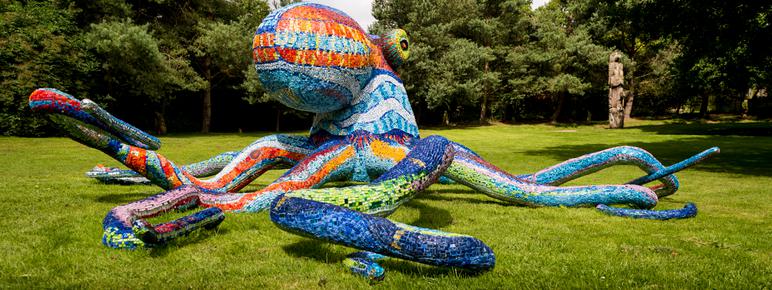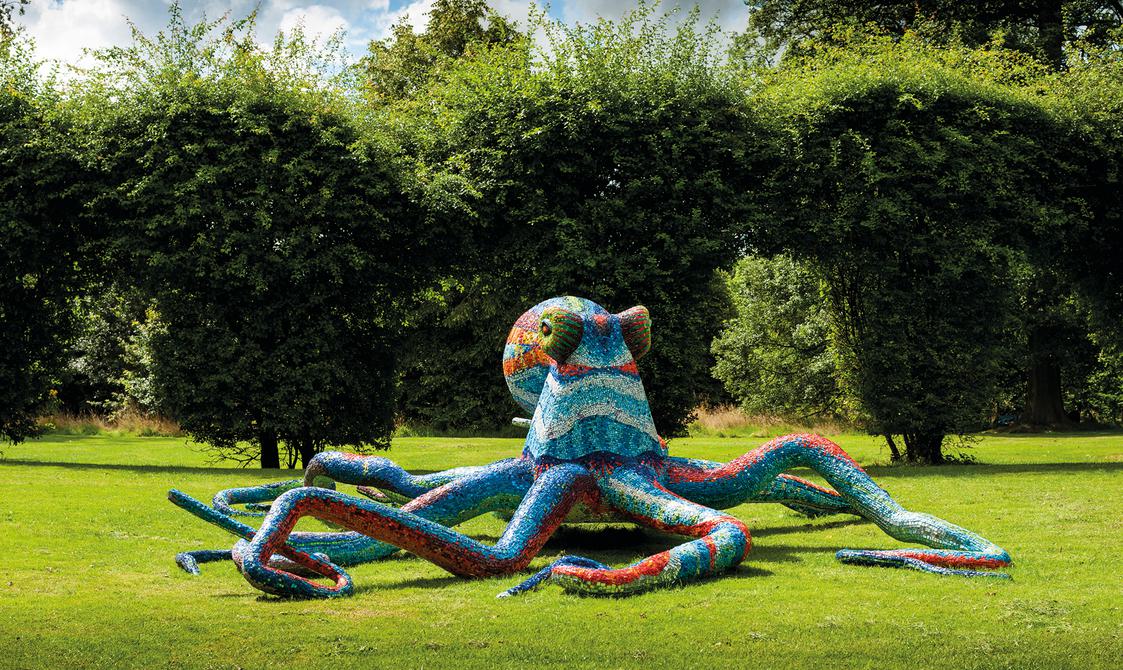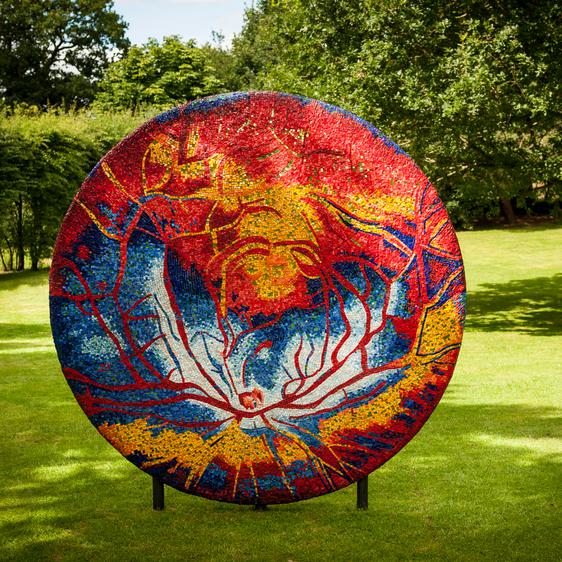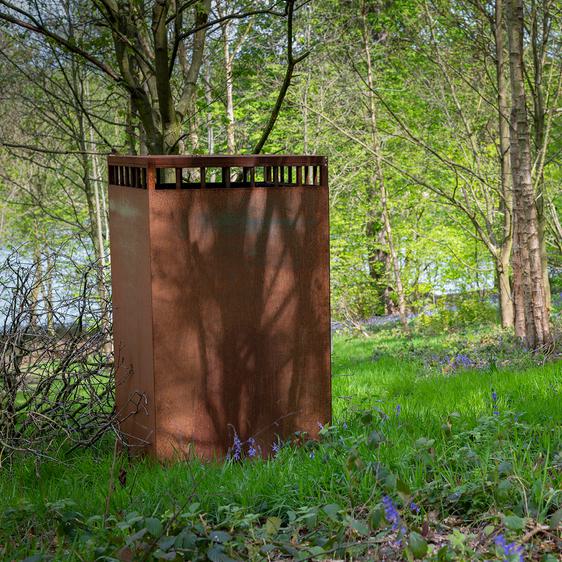
Marialuisa Tadei: Octopus
Art Outdoors /Marialuisa Tadei: Octopus
Taking inspiration from the shapes and elements found in nature, Marialuisa Tadei is known for producing work using bold colour and materials, including mosaic, glass and bronze, and creates sculptures that have spiritualistic qualities. She creates works of art that sit between reality and the imagery of dreams.
Octopus (Polipo) is formed of hand-cut, coloured glass tiles which are carefully pieced together over the concrete and steel structure. It is a key example of Tadei’s use of mosaic to elevate everyday forms into a more ethereal realm. Her octopus is larger than real life, and by using shades of red, orange, blues, greens and pinks, she creates an enchanting, mystical and otherworldly sea creature that seems to belong in fantasy.
The pieces I create are works of art that seem to me as if they might be found in our dreams, reminiscent of another world.
- Marialuisa Tadei


You might also like
- Art Outdoors

Marialuisa Tadei: Night and Day
Tadei’s works commonly explore mystical and spiritual views inspired by anatomy and nature, and uses geometric forms, such as circles, to symbolise eternity. The two-sided mosaic Night and Day (Incarnazione) is an extension of the artist’s Oculus Dei series (1998-2008), colourful and abstract disks made of glass and marble that can be interpreted as the details in human eyes. - Art Outdoors

Kenny Hunter: Bonfire
Kenny Hunter’s work is an examination of popular culture through the legacy of a darker history that continues to shape contemporary life. His work disrupts traditional modes of sculpture presentation by using bronze, which is associated with traditional statues or monuments, in combination with humble or everyday subject matter. This can be seen in the Bonfire works that are in the YSP landscape. - Profile

Helen Whitehouse OBE
- Art Outdoors

Alfredo Jaar: The Garden of Good and Evil